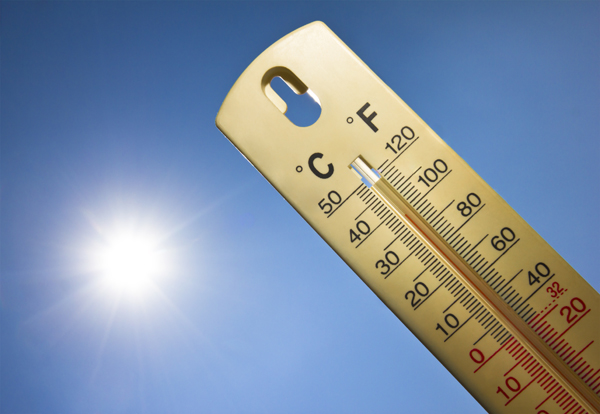Take 5: How to beat the heat

Your smartphone’s weather app informs you of the impending heat wave and yet you refuse to skip your daily five-mile runs through downtown Boston. You’ve just spent the balance of the day studying at the park and now you’re looking for a way to cool off. It’s approaching midnight on a particularly humid evening and precious sleep is looking more and more unlikely. If you want to beat the heat this summer, staying cool while keeping safe, follow these five tips from Linda Malone, an assistant clinical professor in the School of Nursing and director of the pediatric nurse practitioner program in the Bouvé College of Health Sciences.
Hydrate before you get thirsty
On really hot days, you should begin drinking water before you get thirsty. If you’re idle, drink eight to 10 ounces of water every hour; if you’re exercising outside, drink an additional two to four cups of water per hour. Remember to stay away from caffeine, alcohol, and sugary beverages, all of which can lead to fluid loss and/or dehydration.
Eat fruit and forego big meals
Contribute to your fluid intake by eating fruits with high water content like watermelon and cantaloupe and forego large, infrequent meals in favor of smaller, more frequent ones. These will keep your energy level stable throughout the day.
Exercise in the morning or after sundown
Workout in the morning or at night, but avoid exercising during the hottest part of the day, which will arrive between 2-4 p.m. Be sure to take frequent breaks and increase your water consumption in temperatures exceeding 90 degrees.
Cool off in the shower
Take a refreshing shower, but make sure the water isn’t too cold. Taking a cold shower after spending a day in the heat could result in hypothermia, especially in the young and elderly. Other tips and tricks for remaining comfortable in the heat include putting a cool cloth on your head and wearing light-colored clothing. Fans help, too, but they do not prevent heat stroke in temperatures above 90 degrees.
Be resourceful
Each spring, I lead a large group of Bouvé students to the Domincan Republic, a warm climate where they provide healthcare services to thousands of residents living in rural communities. Before embarking on the two-week trip, I provide the students with extreme heat safety tips, many of which can be found on the websites of the American Red Cross and The Centers for Disease Control and Prevention. Both offer even more tips for staying cool—and safe—in the oppressive heat.





